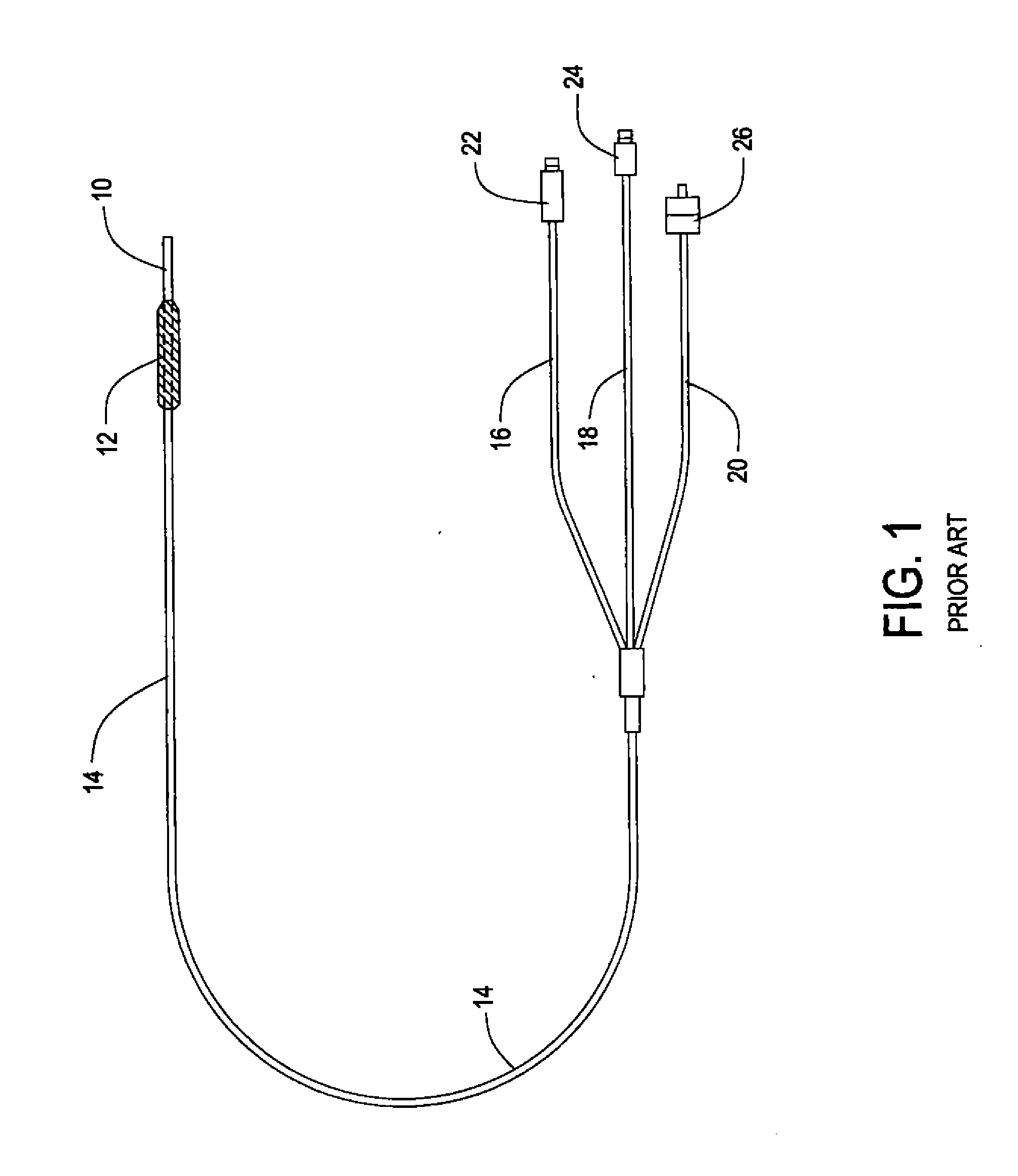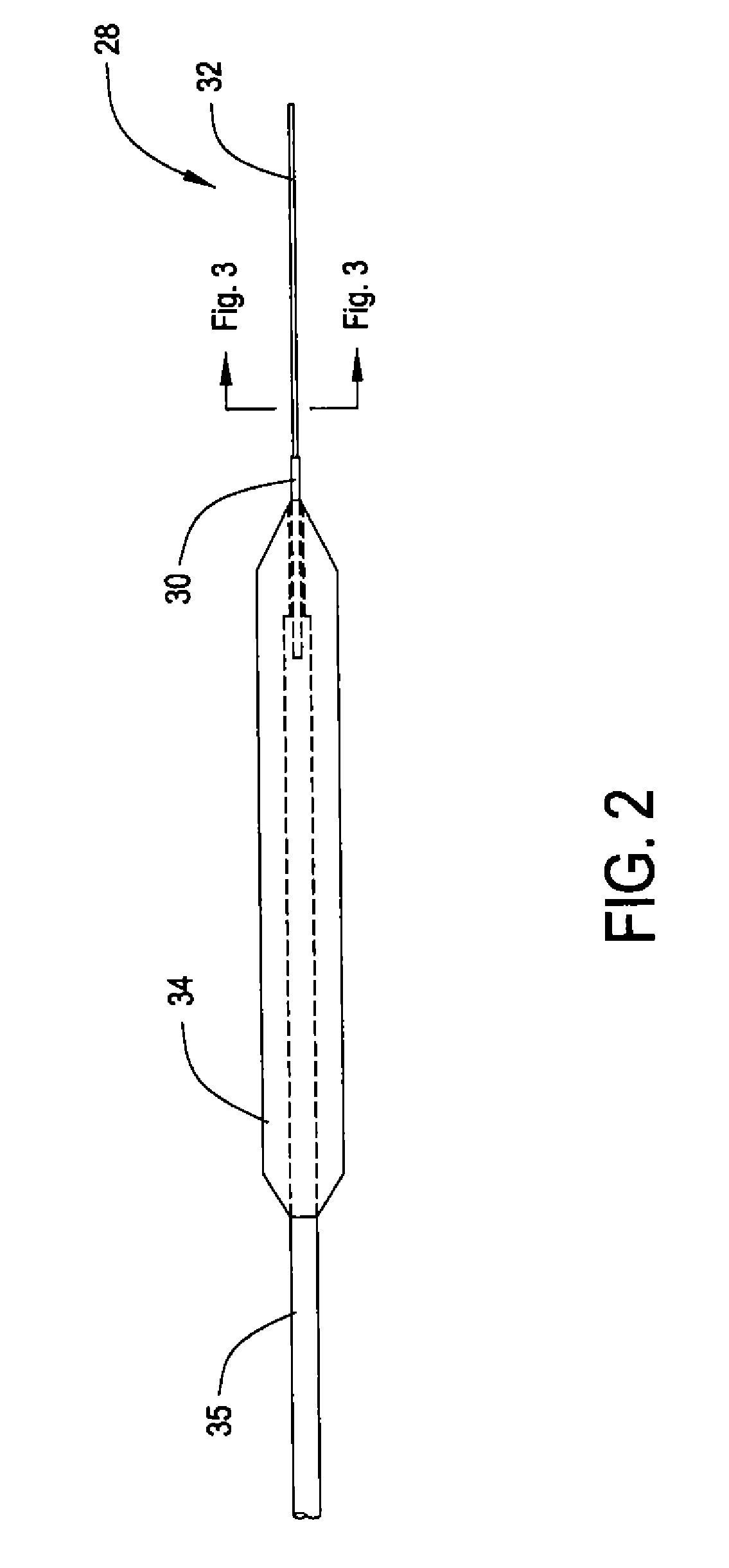Laser Video Endoscope
a laser endoscope and endoscope technology, applied in the field of laser video endoscopes, can solve the problems of small diameter of the probe, fragile and tend to break, and problems such as the risk of breaking, and achieve the effect of reducing the risk of breaking
- Summary
- Abstract
- Description
- Claims
- Application Information
AI Technical Summary
Benefits of technology
Problems solved by technology
Method used
Image
Examples
Embodiment Construction
[0014]FIG. 1 illustrates one prior art device. The rest of the figures are all to a single embodiment of the device of this invention.
[0015]As shown in FIG. 1, the known video endoscope has an operating probe 10, a hand piece 12 and a cable 14. Extending through the probe, the hand piece and cable are a laser guide 16, illumination guide 18, and an image guide 20. These are all fiber optic guides which extend from the distal end of the probe 10 to the terminals 22, 24 and 26.
[0016]FIGS. 2 through 4 illustrate an embodiment of this invention showing probe 28, hand piece 34 and cable 35. The probe 28 has a proximal portion 30 and a distal portion 32. The proximal portion 30 has a 20 gauge (35 mil) outer diameter and a five mil wall thickness. The probe is stainless steel. The proximal portion extends into the hand piece 34. Thus, at the juncture of the end of the hand piece 34 and the probe 28, there is a diameter having sufficient robustness to contribute to minimizing the likelihood...
PUM
 Login to View More
Login to View More Abstract
Description
Claims
Application Information
 Login to View More
Login to View More - R&D
- Intellectual Property
- Life Sciences
- Materials
- Tech Scout
- Unparalleled Data Quality
- Higher Quality Content
- 60% Fewer Hallucinations
Browse by: Latest US Patents, China's latest patents, Technical Efficacy Thesaurus, Application Domain, Technology Topic, Popular Technical Reports.
© 2025 PatSnap. All rights reserved.Legal|Privacy policy|Modern Slavery Act Transparency Statement|Sitemap|About US| Contact US: help@patsnap.com



